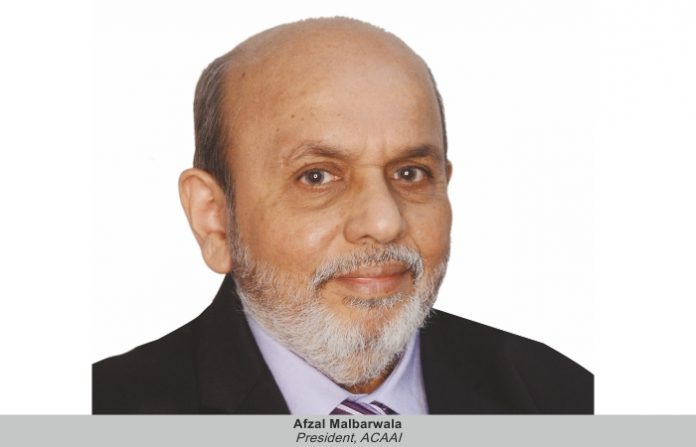Highlighting some of the various points which have been of concern for sometime and providing solutions for the same, ACAAI has shared the draft of the memorandum with the Union Ministry of Civil Aviation recently. Here are the few points mentioned from the same.
POINTS FROM ACAAI FOR CONSIDERATION BY MoCA
Interlinking of airport by a robust SEAMLESS TRANSFER RFS system.
AFS: Need to develop urgently workable and financially feasible transshipment model especially at Delhi and Mumbai international airports to be fed by hub and spoke model and integration of domestic cargo with international cargo through a bridge terminal for exclusively handling transshipment cargo. In this connection, underutilized airports can be identified and incentives given to the Indian carriers to start operations from there. To this end, it is pertinent to encourage Air Freight Stations (AFSs), which can be used effectively.
Common platform pan India: It is essential there should be a common platform which can be used to integrate all individual systems of the custodians at various airports, and the trade can use a common platform pan India.
MoCA to issue norms for setting up infra: Union Ministry of Civil Aviation should issue clear guidelines for the setting up of infrastructure for the storage and handling of all cargo needing special attention, temperature-sensitive goods and pharmaceutical products.
Internal process to be with the custodian: It is suggested that cargo terminals be designed so that handling of cargo becomes internal to the custodians such as at the passenger terminals. Processes such as loading, unloading, X-ray and bonded locations should be internal process with the custodian.
Standard Operating Procedures: There should be well defined time bound SOPs for standardized airport ops. Handling of cargo to be issued by terminal operators, and responsibility and accountability to be fixed thereon. Since major airports in India are now either RA3 approved or in the process of being so, we have 100 per cent X-ray of goods with high security dual view machines so that illegal and contraband substances can be detected far better than in the past. We must take advantage of them to ensure good surveillance and security, while speeding up clearance processes.
Delays at Customs / Terminals: A problem more relevant in times of erratic flights and low supply of space has been cancellation of flights and flights missed due to delays at customs or terminals. For such shipments, it is imperative that processes be developed to ensure that goods can be withdrawn and rescheduled to ensure orders are not cancelled. These processes currently take almost two to three days and can result in big losses in exports.
The absence of government allied agencies: The agencies involved in processing of documents for exports such as Wildlife Authorities, Plant and Quarantine, Drug Controller, ASI etc are not available 24×7, thereby delaying and hindering the exports process. This is a major hindrance for example wild life authorities visit the airport three times a week for four to five hours, and at all other times shipments would be held up till they show up at the airport on net designated day.
eSanchit: In spite of implementation of eSanchit and digital upload of documents, there is still a mindset of insistence of physical documents for exports processing which leads to additional costs and waste of manpower and resources. Multiplicity of data entry and huge quantities of printed papers are still being used defeating the purpose of truly going digital.
ICEGATE: It is vital to ensure that ICEGATE functions in a smooth manner on 24X7 basis to facilitate the speedy clearance of the export and import goods and decongest the cargo terminals. Custodians and airport operators must exclude the periods of ICEGATE system failure from the computation of the free period.












